ABOUT FIA WORLD RALLY CHAMPIONSHIP.
HOW THE BIG RALLY BEGAN
Back in 1973, racing officials selected 13 rallies (2022) from around the world and organized them into a series featuring contestants competing for the World Championship. That was the starting point for today’s World Rally Championship (WRC). For more than 40 years, the WRC has been the pinnacle of sprint rally racing. In Europe and Latin America, where many of the rallies are held, the WRC rivals F1 racing in popularity.
RULES OF THE RALLY
Perhaps what’s most exciting about the WRC is it’s unusual format as a special stage (SS) event, featuring ordinary cars racing for the fastest time on sections of closed roads. Unlike mass-start circuit races, SS events stagger cars at set intervals of one to three minutes. Multiple SS races are held over a period of three or four days. In the final, on the last day of the competition (a Sunday), places are determined by the teams compiled SS times.
SS races cover a dynamic range of road surfaces and conditions, everything from tarmac to gravel—and even snow—giving each rally a distinct personality. SS road sections are linked by “liaison” sections of public roadways where drivers must obey normal traffic rules. The SS rally is also distinguished by teamwork in the car, as success depends on the driver and his co-pilot working together

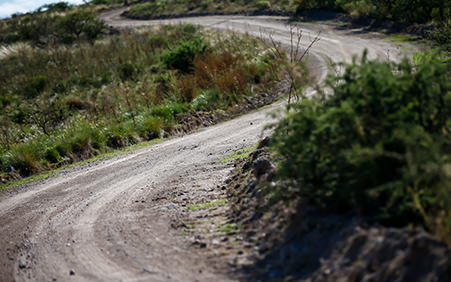
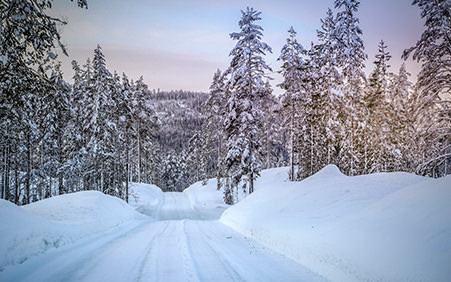
RALLY WEEK
Ordinarily, each team’s on-location preparations begin with setup at the service park the Monday before the rally. The contestants begin course reconnaissance on Tuesday, which runs until the competition is launched with a ceremony on Thursday evening.
In many competitions, the initial SS takes place as Day 1, which starts immediately after the Thursday ceremonial launch. A series of 15-25 Special Stages are scheduled from Day 1 through Day 4, after which time the rally concludes with an awards ceremony.
Note: This represents a typical schedule. Actual timelines depend on the event.
-
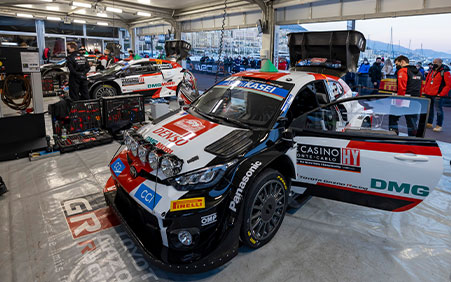
-
Monday & Tuesday
Setting up at the service park
During the rally, hospitality services are available at the service park and fans are encouraged to visit. There they can get up-close views of the mechanics at work, racers talking with the engineers, and much more.
-

-
Tuesday & Wednesday
Reconnaissance (previewing the course)
Prior to the rally, the drivers take a reconnaissance tour of the entire course (Special Stages), checking out corner size, road conditions and more. Using a special notebook called “Pacenotes,” the co-drivers take down a myriad of details about the course to share with the driver. These notes are read aloud during the competition.
-
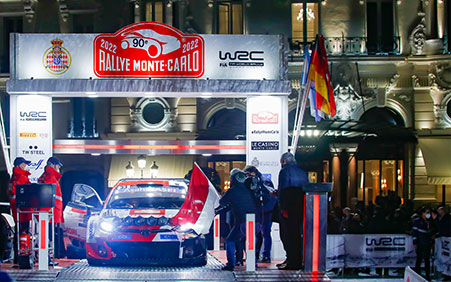
-
Thursday
Shakedown / Ceremonial Launch
In a festive event prior to the launch of the competition, each car is rolled up to the podium and displayed for the viewing pleasure of the fans in attendance.
-

-
Thursday, Friday, Saturday and Sunday
Special Stages (SS)
A series of 15-25 (depending on the specific competition) time attacks are held from Thursday through Sunday. A single Special Stage may be very short, as little as two kilometers, or as long as fifty kilometers. One competition can run a distance of more than 1,000 kilometers including liaisons.
-

-
Sunday
Power Stage / Awards Ceremony / Press Conference
Most rallies end with a Special Stage, called the “Power Stage,” where the top five contestants can earn bonus points. Victory or defeat depends entirely on the grand total of Special Stage times. The awards ceremony follows the Power Stage.
WHY TOYOTA COMPETES IN THE WRC
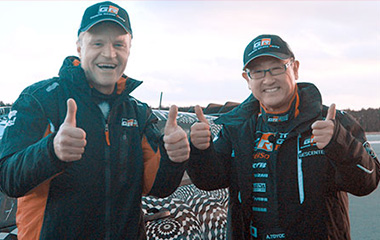
Hairpin turns, icy patches, potholes—variety is the spice of the WRC. And because the real world is full of vastly different roads, from rough, uneven, unpaved roads, to smoothly paved mountain roads, to roads with icy patches hidden under new-fallen snow, learning about them is essential to developing top quality cars. To achieve our goal of manufacturing ever-better cars, we need an intimate understanding of how ordinary people deal with these roads in everyday life.
The rally is a motor sport that comes down to how far cars can go on a wide range of road conditions. That makes it the ultimate training ground for us at Toyota. The WRC is considered the greatest event of motor sports, which makes it the ideal arena for us to learn about the world's roads. By going for the top WRC category with the GR YARIS Rally1 HYBRID, which was developed based on the production GR YARIS, we accomplished three goals: We were able to train people in extreme conditions. We developed technologies at a high level. And we used the knowledge and experience gained as feedback in the development of new production vehicles. These are the reasons Toyota decided to take on the WRC in the first place.
TOYOTA AND THE WRC:
THE LONG ROAD TO VICTORY
Toyota got its start in motor sports in 1957 when we entered the Mobilgas Round Australia Rally. Our first WRC victory was in 1975 at the 1,000 Lakes Rally with our factory-backed team. We went on break numerous records and claimed many more victories, including three consecutive Safari Rally wins.
In 1990, Toyota had its first WRC champion driver. In 1993 we were the first Japanese brand to win the WRC manufacturers’ title. Together with Mitsubishi and Subaru, Toyota brought a great deal of excitement to the events, and helped shape a golden age of Japanese rally cars.
Up until the end our factory-backed team initiatives in 1999, Toyota made WRC history with three manufacturer team titles and four driver titles.
Then, in 2017, Toyota returned to WRC as the TOYOTA GAZOO Racing World Rally Team (WRT). We recorded five rally victories over the course of the 2018 season and secured the manufacturers’ championship for a fourth time, while in 2019 Ott Tänak and Martin Järveoja won their first-ever drivers’ and co-drivers’ championships. We entered the 2020 season with a new driver line-up, and claimed four wins across seven rallies; our pairing of Sébastien Ogier and Julien Ingrassia were crowned champions for a seventh time. Ogier and Ingrassia claimed their eighth titles in 2021, while Toyota won nine of the 12 rallies as it achieved the hat-trick of drivers’, co-drivers’ and manufacturers’ championships for the first time since 1994.
WRC CATEGORIES
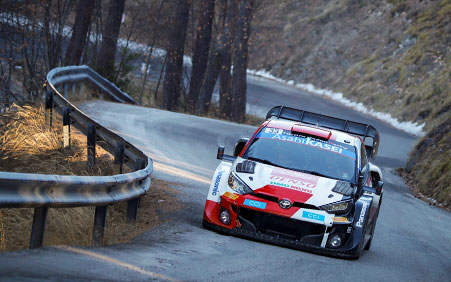
The FIA World Rally Championship (WRC), which brings together rally events held in countries all over the world into a series, was launched in 1973. The WRC is divided into the Drivers' and Co-drivers' Championship and the Manufacturers' Championship. Various types of cars are allowed to compete in WRC, and from 2022 the new specification of Rally1 cars — including the GR YARIS Rally1 HYBRID — will form the top category, taking the place of the World Rally Car rules that were first introduced in 1997 and evolved every few years. The new technical regulations include the introduction of hybrid power for the first time and the use of a fully sustainable fuel, as well as a simplification of the aerodynamics and transmissions seen on the most recent World Rally Cars. Manufacturers can nominate up to three cars for each rally, and the top two cars contribute points to the manufacturers' rankings.
Additional teams using Rally1 cars can also enter the championship as a WRC Team. However, they are only permitted to nominate a maximum of two cars for each rally, and must enter at least seven rallies, including one rally that takes place outside Europe.
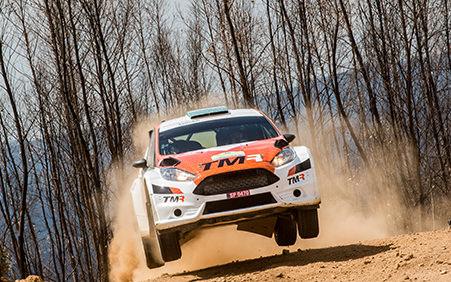
WRC has support categories for drivers, co-drivers, and manufacturers who are not competing with World Rally Cars. Up until 2019, there were two championships: WRC 2 Pro for drivers and teams competing with R5 cars, and WRC 2 for private drivers also competing with R5 cars. However, from the season of 2020, the existing WRC 2 Pro will be renamed WRC 2, while the existing WRC 2 will be renamed WRC 3.
The new WRC 2 awards titles for participating teams, as well as for drivers and co-drivers registered by those teams. Teams can enter a maximum of two cars per rally, and must participate in eight rallies, of which at least one must be outside Europe. Results in all eight rallies count toward the championships.
The new WRC 3 features titles only for drivers and co-drivers, who can earn points from the best six results of any seven rounds. While the existing R5 cars were renamed as Rally2 (R2) cars in 2020, the basic vehicle regulations remained unchanged. Rally2 cars are second in performance to World Rally Cars, and are dedicated 4WD rally cars for young competitors looking to move up to World Rally Cars as well as highly-experienced veteran competitors. Currently, Citroën, Volkswagen, ŠKODA, and Hyundai manufacture and offer such cars to competitors.
Junior WRC is a championship for young drivers aged under 29 years old at the beginning of the year; there is no age restriction for co-drivers. The series was previously known as WRC Academy, and drivers including Sébastien Ogier and Elfyn Evans are previous champions. For 2022, the championship has upgraded from two-wheel drive Rally4 cars to four-wheel drive Rally3 cars, with drivers competing officially for the WRC3 Junior title within the WRC3 category. In 2022 the series comprises a total of five rallies.



